Troubled Neutra house
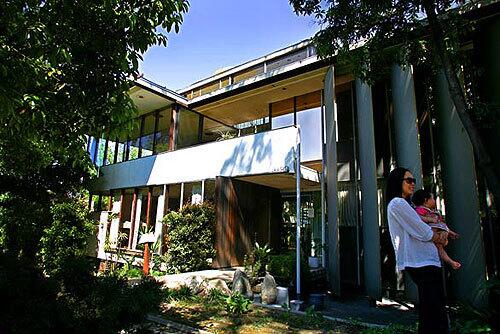
The Richard Neutra VDL Research House II, the fabled glass box on Silver Lake Boulevard in Los Angeles, faces tough times. The house where midcentury architect Richard Neutra lived and worked has fallen into disrepair, and now the owner, the nonprofit Cal Poly Pomona Foundation, has announced that it might be forced to sell the landmark and close it to the public if supporters can’t raise upward of $2 million by the end of next year. (Richard Hartog / Los Angeles Times)
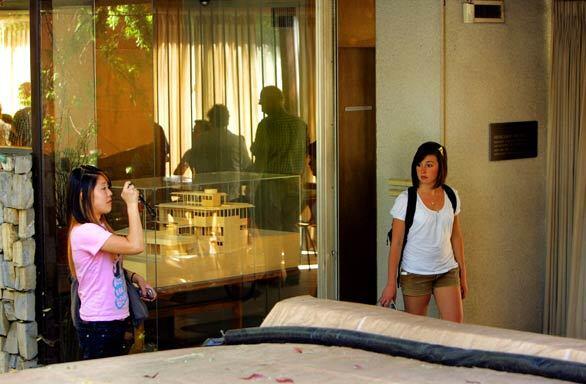
New caretakers recently began Saturday tours of the landmark to raise money for its restoration and maintenance. (Richard Hartog / Los Angeles Times)
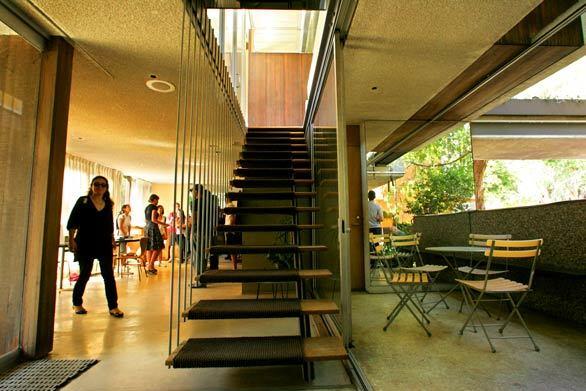
The mid-1960s design by Neutra and son Dion demonstrates many of the ideas that modern homes still employ today. Here, wide glass doors on the main floor open to the outdoors. (Richard Hartog / Los Angeles Times)
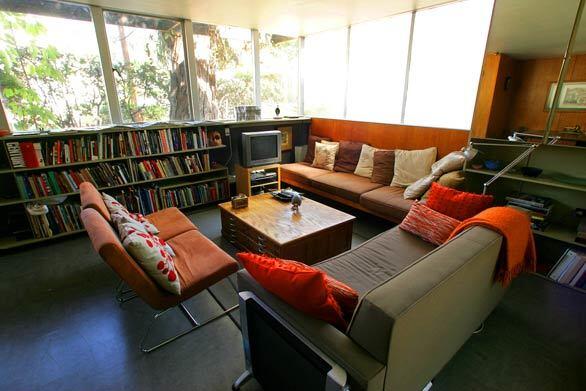
The placement of windows and built-in shelving carefully frames views of nature while shielding the house from neighbors. Part of the houses genius is how it fits 2,100 square feet of living space on a 60-by-70-foot lot without feeling hemmed in by other homes. (Richard Hartog / Los Angeles Times)
Advertisement
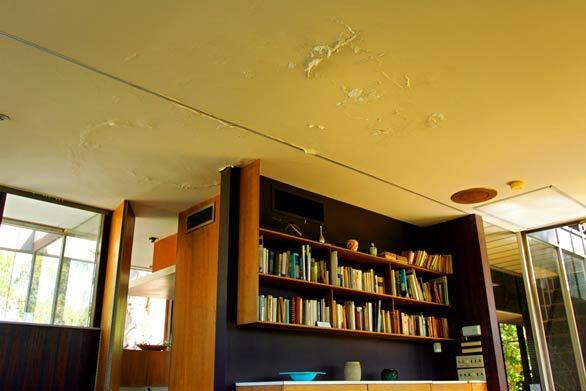
Visitors on the Saturday tours witness some of the buildings problems, such as this ceiling, but termite damage, asbestos and other unseen issues also plague the site. (Richard Hartog / Los Angeles Times)
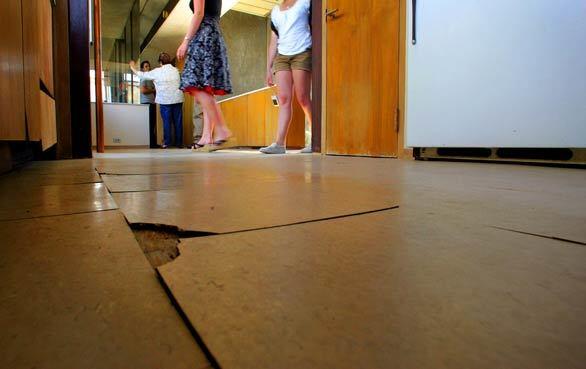
The kitchen floor is on the long list of repairs. A letter from Cal Poly Pomona President J. Michael Ortiz to Richard Neutras son Raymond said $30,000 must be raised by October to cover insurance, utilities and upkeep of the site through 2009. Raymond Neutra, who is spearheading fundraising efforts, has until December 2009 to raise $1 million for an endowment to cover future expenses. Supporters hope to raise an additional $1 million to cover building repairs. (Richard Hartog / Los Angeles Times)
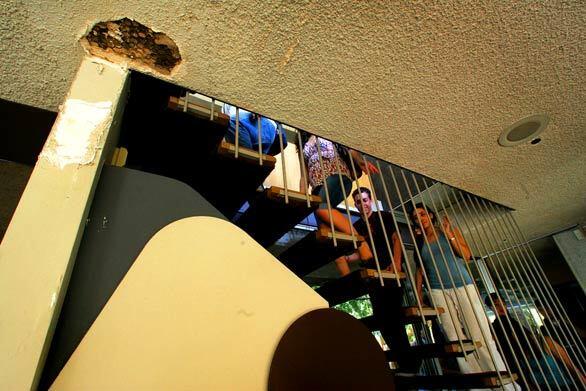
Tour-goers climb stairs of the ailing landmark. Its a result of benign neglect for the 20 years since my family donated the house to Cal Poly, Dion Neutra said. (Richard Hartog / Los Angeles Times)
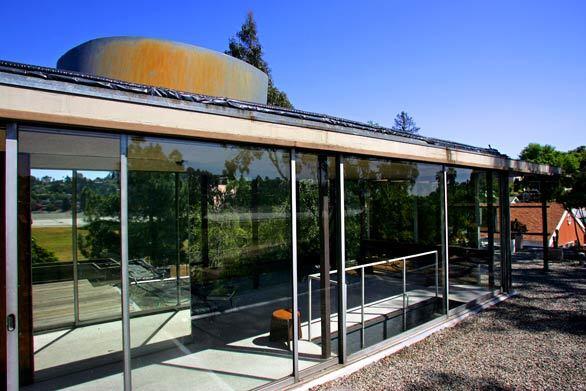
The top floor of the house is a glassed-in observation room. The roof once served as a reflecting pool. (Richard Hartog / Los Angeles Times)



